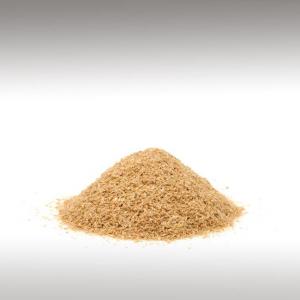
RICE BRAN OIL - BASE OILS

BASE / GENERAL DATA
Information submited: June 1, 2015 Modified: May 9, 2018 By: OperaDreamhouse
Rice Bran oil is popular as a “Healthy oil” in Japan, Asia, and particularly India. Be careful not to confuse Rice Bran with other forms of Bran such as Oat and Wheat Bran.
Rice Bran oil is the oil extracted from the hard outer brown layer of Rice after chaff ( Rice husk). It is notable for its high smoke point of 232 °C and its mild flavor, making it suitable for high-temperature cooking methods such as stir frying and deep frying.
The Bran fraction, which includes the Germ or embryo in most commercial milling operations, represents only about 8% of paddy weight but contains about three - fourths of the total oil. Containing about 15 - 20% oil (the same general range of Soybeans), rice bran is commercially feasible for oilextraction.
It has a very appealing nut - like flavor and once extracted is very stable with good fry - life. But perhaps its most notable feature is its high level of components with nutraceutical value such as gamma - oryzanol and tocotrienols.
Rice Bran oil is made from the most nutritious part of rice, the Bran and Germ. The most growing Rice Bran oil is made in Thailand. Thai Rice which has been grown sustainably for thousands of years.
Chemical structure:
Rice Bran oil is truly "The World's Healthiest" edible oil, containing Vitamins, antioxidants, nutrients and trans fat free.
Rice Bran oil has a composition similar to that of Peanut oil, with 38% monounsaturated, 37% polyunsaturated, and 25% saturated fatty acids.
Fatty acid composition:
Myristic acid - 6%
Palmitic acid - 5%
Stearic acid - 2,9%
Oleic acid (an omega - 9 fatty acid) - 38,4%
Linoleic acid (LA, an omega - 6 fatty acid) - 34,4%
α-Linolenic acid (ALA, an omega - 3 fatty acid) - 2,2%
One major problem with this oil is its ratio of omega - 6 to omega - 3. Rice Bran oil contains high amounts of omega - 6 fatty acids (linoleic acid) and virtually no omega - 3 (linolenic acid). This fact alone is enough to strike this oil out of diet permanently unless you are supplementing with omega - 3.
The ideal ratio between these two fatty acids is 1:1 and the nutritional habits of most people in developed nations has this ratio soaring more than 15:1 (omega - 6: omega - 3).
Rice Bran oil may also have the potential to be genetically modified in the future, so it's important to ensure only organic sources of this oil are used. Rice Bran itself is also potentially high in arsenic so this is another level of concern which requires more research.
Rice Bran oil is the oil extracted from the hard outer brown layer of Rice after chaff ( Rice husk). It is notable for its high smoke point of 232 °C and its mild flavor, making it suitable for high-temperature cooking methods such as stir frying and deep frying.
The Bran fraction, which includes the Germ or embryo in most commercial milling operations, represents only about 8% of paddy weight but contains about three - fourths of the total oil. Containing about 15 - 20% oil (the same general range of Soybeans), rice bran is commercially feasible for oilextraction.
It has a very appealing nut - like flavor and once extracted is very stable with good fry - life. But perhaps its most notable feature is its high level of components with nutraceutical value such as gamma - oryzanol and tocotrienols.
Rice Bran oil is made from the most nutritious part of rice, the Bran and Germ. The most growing Rice Bran oil is made in Thailand. Thai Rice which has been grown sustainably for thousands of years.
Chemical structure:
Rice Bran oil is truly "The World's Healthiest" edible oil, containing Vitamins, antioxidants, nutrients and trans fat free.
Rice Bran oil has a composition similar to that of Peanut oil, with 38% monounsaturated, 37% polyunsaturated, and 25% saturated fatty acids.
Fatty acid composition:
Myristic acid - 6%
Palmitic acid - 5%
Stearic acid - 2,9%
Oleic acid (an omega - 9 fatty acid) - 38,4%
Linoleic acid (LA, an omega - 6 fatty acid) - 34,4%
α-Linolenic acid (ALA, an omega - 3 fatty acid) - 2,2%
One major problem with this oil is its ratio of omega - 6 to omega - 3. Rice Bran oil contains high amounts of omega - 6 fatty acids (linoleic acid) and virtually no omega - 3 (linolenic acid). This fact alone is enough to strike this oil out of diet permanently unless you are supplementing with omega - 3.
The ideal ratio between these two fatty acids is 1:1 and the nutritional habits of most people in developed nations has this ratio soaring more than 15:1 (omega - 6: omega - 3).
Rice Bran oil may also have the potential to be genetically modified in the future, so it's important to ensure only organic sources of this oil are used. Rice Bran itself is also potentially high in arsenic so this is another level of concern which requires more research.

SPIRITUAL PRACTISES DATA

MEDICINE / HEALTH DATA

BEAUTY / COSMETICS DATA
Information submited: June 1, 2015 Modified: May 9, 2018 By: OperaDreamhouse
Thisoil has long been used in Japan as a base for soap, skin moisturizer and protector. It is said to be an effective substitute for lanolin. Rice Bran oil is especially used for treating dry and mature skin.
The oil is purported to reverse the effect of aging by slowing the formation of facial wrinkles thanks to Rice Bran oil's rich concentration of Vitamin E and gamma-oryzanol.
In Japan, women who use rice bran oil on their skin are known as "Rice Bran Beauties".
The oil is purported to reverse the effect of aging by slowing the formation of facial wrinkles thanks to Rice Bran oil's rich concentration of Vitamin E and gamma-oryzanol.
In Japan, women who use rice bran oil on their skin are known as "Rice Bran Beauties".

FOOD / COOKING DATA
Information submited: May 9, 2018 By: OperaDreamhouse
It is popular as a cooking oilin several Asian countries, including Bangladesh, Japan, India and China. In India, it is now being recognized as their version of Olive oil.
COMMENTS
No comments.


